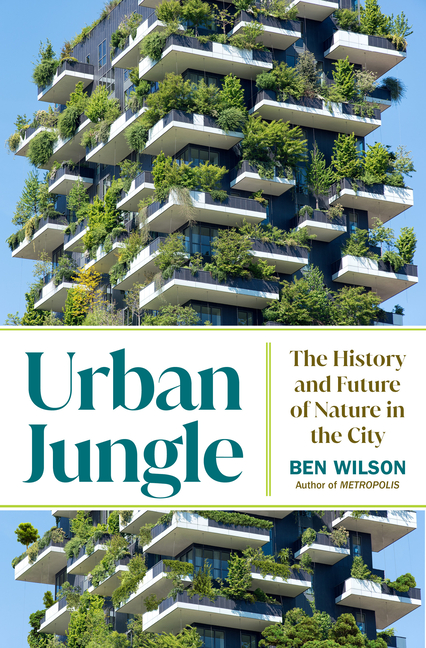
By Ben Wilson
Doubleday, 2023
284 pages, hardcover, $30
What immediately struck me about Ben Wilson’s “Urban Jungle: The History and Future of Nature in the City” was the book’s front cover photo. Here is a many-storied, cement-looking structure in Italy, the Milan Vertical Forest, almost completely covered by green tree and shrub foliage. Is it apartments, offices, or a forest? Actually, it’s all three.
It combines reforestation and biodiversity with sustainability: cooling the building, reducing energy costs, cutting air pollution, and increasing the habitat for more living creatures. The building’s architect calls it “A house for trees inhabited by humans.” If you can afford a two-bedroom flat for a mere $5.7 million (U.S.), there’s a forest right outside your window, made up of over 90 different species.
The photo symbolizes Wilson’s basic premise: the city is an entirely different ecosystem from the rural areas surrounding it, but just as much a part of nature. For centuries, urban environments have been engineered and manipulated by humans for their benefit, but we now know we need to primarily reconstruct urban areas to be in harmony with nature, not separate from it.
The author looks historically at city life: the relationship between rural and urban, the creation of parks and natural areas, the abandonment of ancient cities and their return to nature, the importance of trees, and the necessity of water, food production, and animals in urban areas.
A few unique takeaways from “Urban Jungle”: there are no such things as “weeds,” every plant has its purpose; even after a (nuclear) war or environmental catastrophe, nature will come back; plants and animals evolve when part of an urban ecosystem; “wild” sections of cities are more in harmony with nature than neat-looking parks; biodiversity is greater in urban areas; cities and suburbs can feed themselves if enough rooftop gardens and grass-into-garden spaces are utilized.
Wilson is encouraged by changes in urban environments. Cities are beginning to transform, overcoming the legacy of colonialism (open sewers, slums, facilities geared to the rich) and the mindset of humans controlling nature. Instead of erecting walls to keep water out, they’re letting the water in, creating resilience to natural events.
Research shows that Bologna, Italy, could provide 77% of its residents’ vegetables if all its rooftops had gardens. Meanwhile, Toronto recently mandated all new buildings have green roof coverage, and Berlin has over 70,000 community garden plots and 12,000 more on a waiting list. Can cities outside China recycle nightsoil (aka poop) for growing food? The author hopes so.
Wilson singles out Singapore and Amsterdam as examples of cities of the future. Urban agriculture, reestablishing wetlands, discouraging car use, and green buildings are hopeful symbols. Many larger U.S. cities have begun this transition as well.
Climate disruption is inevitable, even if we stop using fossil fuels by 2050 or sooner. Wilson is hopeful that cities will be in the vanguard by creating a “new normal,” a more environmentally friendly world, by being a part of nature, in harmony with it, not apart from it.
– Larry Dansinger, Bangor, Maine
This review was originally published in the fall 2024 issue of The Maine Organic Farmer & Gardener. Browse the archives for free content on organic agriculture and sustainable living practices.
